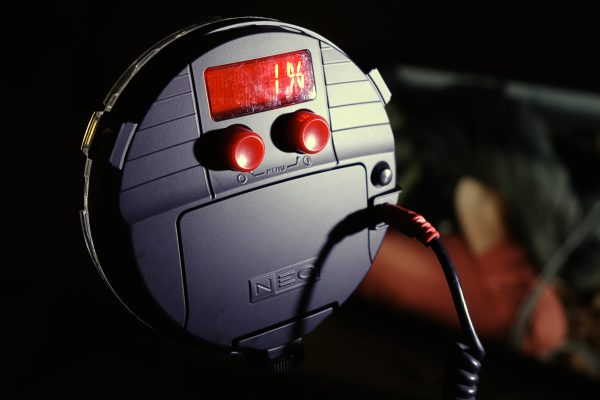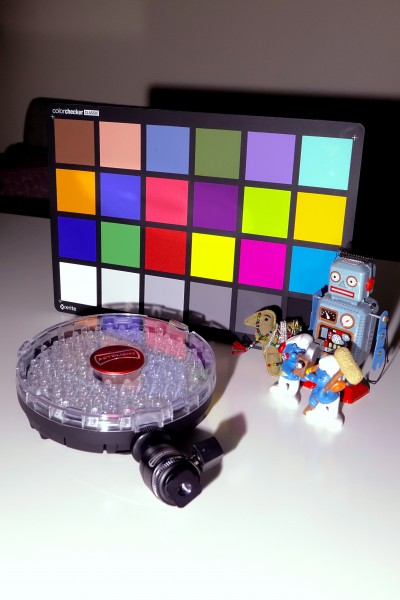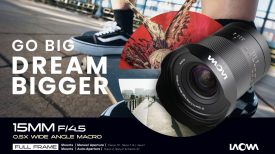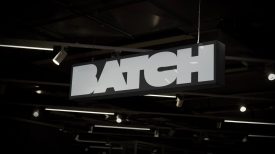By technical editor Matt Allard:
For solo operators or those who travel a lot, having a small, compact light kit is essential. Finding a good, colour-accurate, compact three-light kit that won’t break the bank can be a challenging task though – small three-light kits always seem to have limitations, and are often a compromise over carrying larger kits. For many years now I have been using the Litepanels Sola ENG kit and have found it to be very reliable, robust and easy to use. It’s not without its problems though. I very rarely use it as a standalone kit as I find that a small light source just doesn’t meet my needs. I usually use the lights in the kit as backlights and for lighting backgrounds. The Sola ENG can be spotted up or flooded and gives you a lot of control over your lighting. On the down side, it is not the most colour accurate light in the world and once diffused it doesn’t provide enough punch to be used as a key light for interviews. Instead, I’ve found the Sola ENG kit works well in conjunction with a good key light. I have recently included some of the new Wescott Flex lights in my kit and have found I can fit two of them in the same case as the Litepanels Sola Kit, giving me a very compact five-light package.
I recently tested out the Rotolight NEO three-light kit which, as its name suggests, is designed as a complete lighting solution. Having used the Litepanels kit for so long I was interested to see how this one would perform. It consists of three NEO on-camera LED lights, three shoe adapter to 1/4″ male studs, three 360-PRO ball heads, three compact light stands, power adaptors, standard filter pack and add-on colour FX Kit, all in a really nice hard roller case. It’s a P67 rated case, meaning it is completely dustproof and includes an air release valve so the case can actually survive being submerged in up to one metre of water.
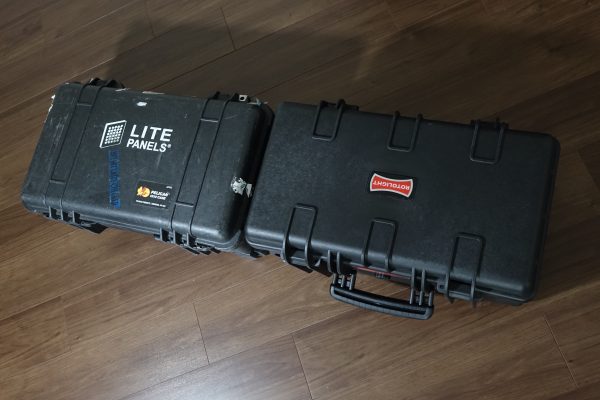
The Rotolight hard case is slightly bigger than the Pelican 1510 case. According to Rotolight the case is specifically designed to fit in a airline overhead bin. It does, however, substantially add to the weight of the kit. It would be nice if Rotolight could also offer the option of a soft case for easier transport.
The NEO has been designed as a compact and versatile on-camera, bi-color LED light that delivers a 50-degree beam angle. It has a nice soft light output, and what Rotolight calls its signature ring-light effect. The colour temperature of the light is adjustable from 3150K to 6300K in ten-degree Kelvin steps using a rotary knob on the back. A second rotary knob lets you dim the light from 100% to 0% output which, according to the company, creates no colour shift. An electronic display on the back shows the colour temperature and output of the light as well as all the menu functions. At full output, the 120 LEDs on the NEO produce a peak brightness of 1077 lux at three feet. The NEO fixture is very efficient and draws only 9W of power.
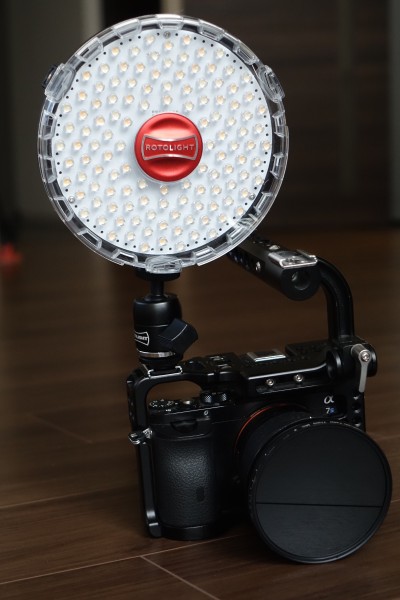
According to Rotolight the NEO can be powered by six AA batteries to provide up to five hours of continuous use, or three hours at 100% power. I found these figures to be fairly accurate, but it did depend on the type and brand of batteries. You can run the light off regular AAs, but you will not get nearly as much runtime as with lithiums. It can also be powered using the included AC adapter or an optional D-Tap power cable. The light has a 1/4″-20 threaded mounting hole and includes a 360° swivel shoe mount. I found the mounts easy to use and it was easy to place the light on a light stand or on top of a camera. The NEO is lightweight so even though it sits quite high, it doesn’t feel unbalanced when using it as an on-camera top light, even on small camera set-ups such as the Sony a7S. According to Rotolight the NEO is twice as bright as the competing litepanels croma and has twice the battery life.
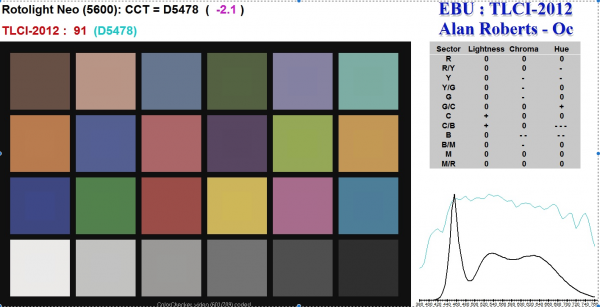
The most important factor for me when choosing a light is colour accuracy. Expert Alan Roberts, who used to set all the standards for the BBC, tested out the NEO using his TLCI method and you can see the results above. The NEO received one of the highest ever TLCI scores for an on-camera/ENG LED and also achieves a CRI 95 and Skin Tone 99 (out of a maximum 100).
I don’t have the equipment to test the CRI, and measurements are always done in controlled environments, so I’ll take Alan at his word. Instead I wanted to see how the lights performed in an ordinary room. In the test above I wanted to see how the Rotolight NEO performed at various kelvin temeperatures. I white-balanced the Arri Amira to see how closely the balance matched that of the Kelvin settings on the NEO. The Amira allows you to fine-tune the colour to compensate for different lighting. You can shift the Green/magenta from -8 to +8 color correction (CC) value. This allows you to see how much green or magenta the camera has to add or remove. The lens used was a Zeiss 35mm T1.5 CP2 at F5.6, and the camera was set at 800 ISO. As you can see from the test, the NEO performed very well at 5600K, 6300K and 4500K and needed almost no colour shift on the Amira. At 3200K there was only a slight shift in colour; the value was under 1.0 CC and still very acceptable. When I compared it against the Litepanels Sola you could see just how much colour shift there was. At its normal daylight operation the Sola had a +3.3 colour shift, meaning the camera needed a lot of magenta added to the image to correctly white-balance. The Sola was even worse in 3200K when using the included CTO gel, showing a massive colour shift of +4.0 CC.
I also wanted to see how the NEO performed when it came to skin tones. I did a series of tests showing how the light looked when used by itself, and when used with the various included filters. The filters definitely give you a bit of control when deciding how you would like your skin tones to look. All in all, the light handled skin tones very well and provided a nice soft source that didn’t create harsh shadows.
One of the unique features of the NEO is the True Aperture Dimming function. This allows the light to show a fairly accurate brightness setting calculated as a f-stop. You need to dial into the NEO the distance your light is from your subject, and what ISO you are running on your camera. The light then calculates the f-stop using an algorithm based on the NEO’s brightness, the ISO and the shutter speed. This enables you to set your lenses f-stop value accordingly. Alternatively you can dial in the lens f-stop value and ISO and the light will tell you how close or far away it needs to be from your subject. This is a very clever feature and from my above test you can see that the results are very accurate indeed. It can save you a lot of time when setting up your lights.
Rotolight have also added a feature called SFX cinematic special effects to the NEO. The company teamed up with DOP and Visual FX veteran Stefan Lange to come up with a series of special lighting effects designed to add production flair to music videos and films. These are not something most factual shooters are likely to use very often, but it is still impressive to see a light of this price have these capabilities. They include a strobe feature, lightning, throb, colour cycle, fireblue, mono, Police and Television effects. You can see how some of these effects look in the video above. The SFX works based on whatever output and colour temperature you have set the NEO at.
The kit certainly comes with a lot of added extras, but what is missing are barn doors to shape the light and control the spill. This is a sorely needed accessory because the NEO itself isn’t focusable like the Litepanels Sola. It provides a fixed 50 degree angle of light and so you can’t adjust the fixture between spot and flood without the barn doors. I wouldn’t be comfortable using a NEO as a key light without barn doors as there’s no way of controlling the light spill. You can of course just use some black foil wrap, or something similar, to shape the light, but the whole point of having a three-light kit is that you get everything included. Without them I think the kit is a little incomplete.
Rotolight have to their credit at least left a cut out space inside the hard case that will fit three barn doors. Chimera have designed a soft box for NEO ($110 MSRP) which will be available alongside barn doors.
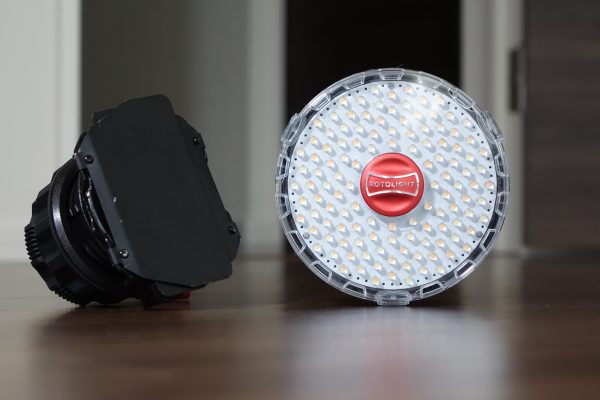
The NEO is manufactured at Pinewood Studios in the UK and the overall build quality of the kit is pretty good. While the lights are made of a hard plastic material, they don’t feel cheap. All the buttons and latches feel fairly secure, though only time will tell how well they stand up to the rigours of working in the field. Size-wise they are bigger than the Litepanels Sola, but there is little weight difference. The hard case has laser cut inserts and all the included light stands, cables and mounts are very well made.
The only things I felt were a little flimsy were the included filters. I wish these had been made of harder material. They feel like an item that you would have to continually replace if used daily. That said, there is a technical reason why Rotolight made the filters like this. They told me that, because the NEO produces very little if any heat, the filters provided have no issue with heat degradation that they would do if used with a traditional ‘hot’ light. By opting for the filter that we did it a) allowed us to keep weight down as they are considerably lighter than a semi-rigid filter), but most importantly b) allowed us to include a much wider selection of filters for the user with a range of diffusion, cosmetic skin tones and FX filters that would have been possible to fit within a kit of this size, the kit overall includes 22 filters (4 pack filter with each NEO 2x diffusion, 1 x cosmetic peach skin tone and 1 x magenta, as well as the 10 pack Add on Colour FX Kit).
All in all, the Rotolight NEO three-light kit offers very good value for money. Not only do the lights produce a nice soft light, but they are very colour accurate as well. They are versatile enough to be used on top of a camera or stand alone. If I wanted to use the kit for shooting interviews, I would definitely purchase the optional barn doors. I would probably still use this kit in conjunction with a larger key light such as a Westcott Flex, but it’s the first small, three-light kit that I would be comfortable using on its own if I had to. The lights provide a good amount of output and are very power efficient to run. The ability to run them off AA batteries, mains power or via a D-tap allows the lights to be used in any environment very easily. Being a bi-colour light they give you the added benefit of being able to adjust the colour temperature for a variety of situations and lighting conditions. The True Aperture Dimming and SFX features add to the kit’s versatility. The Rotolight NEO 3 light kit retails for $1698 US which is a lot less than competing three-light kits such as the Litepanels Sola ENG ($2700US) and the Felix 301 three-Light P360 LED Kit ($2249 US). Even the The Litepanels Croma Flight Kit ($2025 US) is substantially more expensive. The NEO kit comes with a limited 1-Year warranty.
My only caveat is that the NEO three-light kit isn’t the best option for those backpack shooters who fly a lot and cannot take a lot of excess baggage on planes. They might be better served buying three separate NEOs and fitting them in a soft bag.
Every compact three-light kit I’ve seen is a compromise but the Rotolight NEO is probably the best solution I have tested so far.

